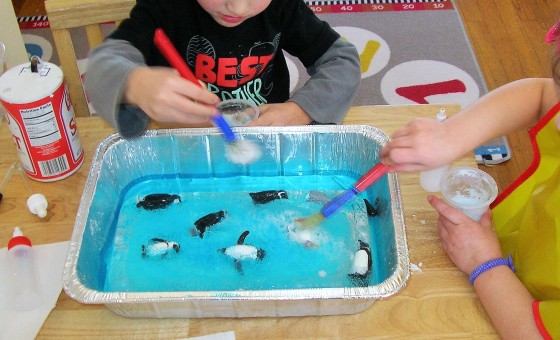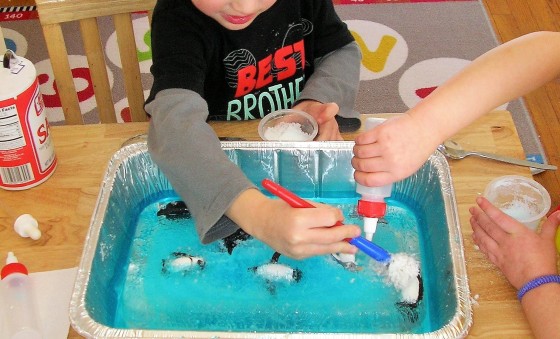
Using Wind (Air) to Make Bubble Prints
Tell me and I forget. Teach me and I remember. Involve me and I learn.
(Benjamin Franklin)
What’s better than a coloring sheet depicting kites and March winds? Simple activities that let children interact with the power of wind (air). Set the stage by tapping into prior knowledge by asking, “What is wind?” Most children will reply that, “it blows.” They aren’t exactly sure what wind is (air), but soon they’ll find out with these four simple wind activities to add to units on Weather, Spring, The Month of March, and more.
Outdoor Fun: Plastic Bag Kites
Nothing illustrates the power of wind like a kite! A quick and easy plastic bag kite is up and ready to go in minutes and provides so much fun for children.

Simple Plastic Bag Kite

Plastic Bag Kites
Supplies:
Plastic grocery bags (check for holes)
String or Yarn (approximately 4-feet long)
Popsicle stick (as handle to wrap string around for easier handling, but not necessary)
Process:
-Gather the bag handles on one side (not the middle) allowing a larger air pocket and tie with yarn/string
-Tie the hanging end of string with a small loop for children to hold onto or tie around a Popsicle stick to create a handle (especially helpful for toddlers/young preschoolers).
Art Experience #1 (Easy, but Fun): Painting with Air
Supplies:
Straws
Small containers for paint or droppers
Process:
-Children use straws to blow paint across paper in different directions.
-Children can experiment with applying paint to paper with small squeeze bottles or with droppers before blowing air through straws.
Note – We found the most successful results with dropping paint from droppers. Squeezing paints, even from small bottles, produced big puddles of paint with less movement.
Art Experience #2: Bubble Prints

Using Wind (Air) to Make Bubble Prints

Using Wind (Air) to Make Bubble Prints

Bubble Prints
Process:
-Mix a little bit of tempera paint (shown here) or liquid watercolors for a more vibrant print into a small container or sturdy cup of half water
-Child blows air through straw into container/cup to make bubbles low or high
-Remove straws from container and lay a heavy piece of white construction or special heavy watercolor paper (more absorbent; keeps it shape) on top of bubble surface. Remove paper, turn over to dry. Repeat.
Variations:
-Could use as a color mixing Lesson. We used red and blue, and where the bubbles overlapped, it turned light purple. Yellow and Red or Yellow and Blue would create even more pronounced shading.
Indoor Fun (with Math Thrown in): Cloud Race
Supplies:
Blue Painter’s Tape (to create non-stick lane lines)
Cotton Balls or Pom Poms
Straws
Table surface to use as track
Process:
-Create lines length- wise on a table.
-Place your cotton balls or pom poms on a beginning mark.
-Children blow air through straws to move their cotton ball across the table to the finish line.
-This is a fun and engaging activity that moves quickly as children race to set up the next cotton ball. They continue to improve upon strategies to maneuver their target to the end.
Variations:
-Use more than one cotton ball or pom pom.
-Try it blindfolded with a timer, and remove blindfold to see how far the target traveled or have a teacher or friend give one child at a time directions (left/right).
-Have painter’s tape marked with inches to keep track of distance traveled.
-Use this as a game to enhance another unit on spiders (black poms); lady bugs (red poms); frogs (green poms); and so on.


















